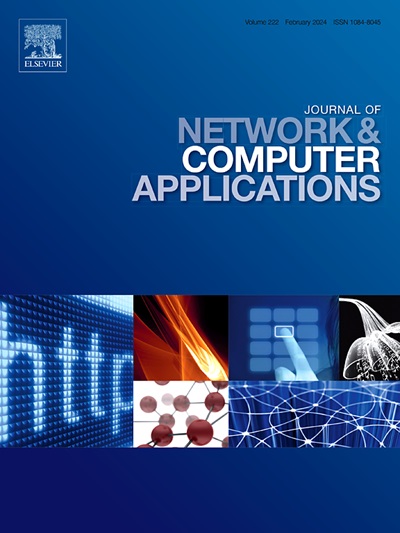CEMA: Cost Effective Multi-Layered Autoscaling for Microservice based Applications
IF 7.7
2区 计算机科学
Q1 COMPUTER SCIENCE, HARDWARE & ARCHITECTURE
引用次数: 0
Abstract
Microservices architecture offers flexibility, scalability, and modularity by dividing applications into small and independent services. However, traditional autoscaling methods often focus on the autoscaling of the container layer alone, leading to inefficiencies such as over-provisioning and under-provisioning of virtual machines (VMs). These inefficiencies can increase operational costs and energy consumption. To address these challenges, this paper presents a novel, cost-effective Multi-Layered Autoscaling (CEMA) strategy that includes service migration to optimize resource allocation across container and VM layers. CEMA leverages predictive autoscaling techniques to dynamically adjust the number of containers and VMs based on real-time workload demands. The strategy includes a service migration mechanism that moves containers from underutilized VMs to those with available capacity, enabling the shutdown of idle VMs and reducing energy consumption. Through extensive experimentation using real-world workloads, including the WorldCup, Wikipedia, Calgary, ClarkNet, and NASA, CEMA demonstrates significant improvements over existing autoscaling methods. Results show CEMA gives 11.7% more processed requests with 19% fewer SLO violations than the baseline methods. Moreover, CEMA reduces the 1.6 infrastructure cost as compared to baseline methods. This paper highlights CEMA’s potential to enhance the efficiency and sustainability of microservices-based applications in cloud environments.
CEMA:基于微服务应用的低成本多层自动伸缩
微服务架构通过将应用程序划分为小而独立的服务来提供灵活性、可伸缩性和模块化。然而,传统的自动伸缩方法通常只关注容器层的自动伸缩,这会导致效率低下,例如虚拟机(vm)的过度配置和不足配置。这些低效率会增加运营成本和能源消耗。为了应对这些挑战,本文提出了一种新颖的、具有成本效益的多层自动扩展(CEMA)策略,该策略包括服务迁移,以优化跨容器层和虚拟机层的资源分配。CEMA利用预测性自动伸缩技术,根据实时工作负载需求动态调整容器和虚拟机的数量。该策略包括一种服务迁移机制,可以将容器从未充分利用的虚拟机迁移到可用容量的虚拟机,从而关闭空闲的虚拟机,降低能耗。通过使用现实世界的工作负载(包括世界杯、Wikipedia、Calgary、ClarkNet和NASA)进行广泛的实验,CEMA展示了对现有自动缩放方法的显著改进。结果表明,与基线方法相比,CEMA处理的请求多11.7%,违反SLO的次数少19%。此外,与基线方法相比,CEMA减少了1.6倍的基础设施成本。本文强调了CEMA在提高云环境中基于微服务的应用程序的效率和可持续性方面的潜力。
本文章由计算机程序翻译,如有差异,请以英文原文为准。
求助全文
约1分钟内获得全文
求助全文
来源期刊

Journal of Network and Computer Applications
工程技术-计算机:跨学科应用
CiteScore
21.50
自引率
3.40%
发文量
142
审稿时长
37 days
期刊介绍:
The Journal of Network and Computer Applications welcomes research contributions, surveys, and notes in all areas relating to computer networks and applications thereof. Sample topics include new design techniques, interesting or novel applications, components or standards; computer networks with tools such as WWW; emerging standards for internet protocols; Wireless networks; Mobile Computing; emerging computing models such as cloud computing, grid computing; applications of networked systems for remote collaboration and telemedicine, etc. The journal is abstracted and indexed in Scopus, Engineering Index, Web of Science, Science Citation Index Expanded and INSPEC.
 求助内容:
求助内容: 应助结果提醒方式:
应助结果提醒方式:


